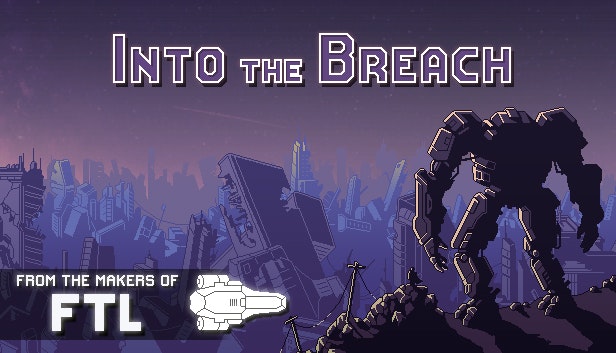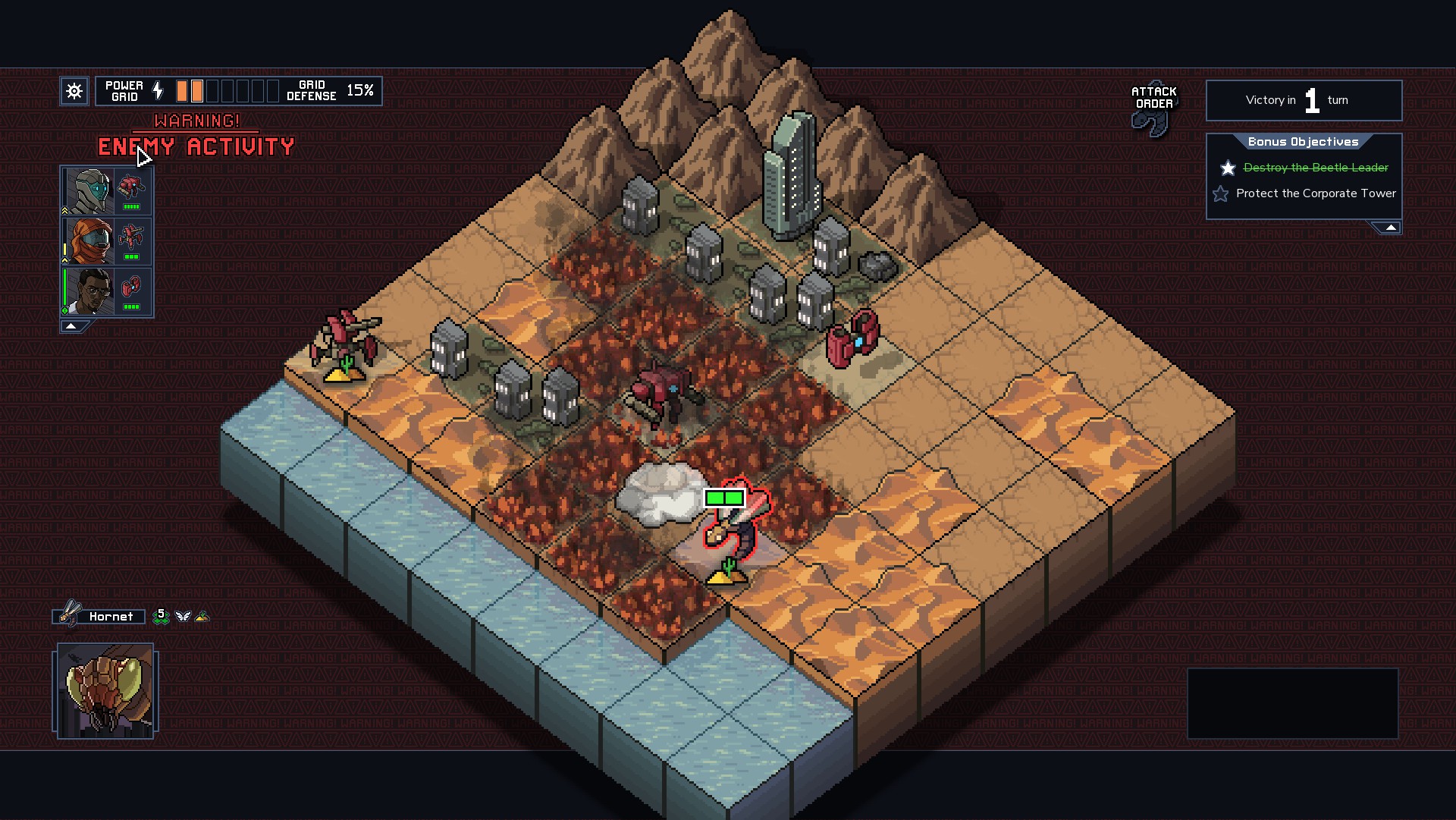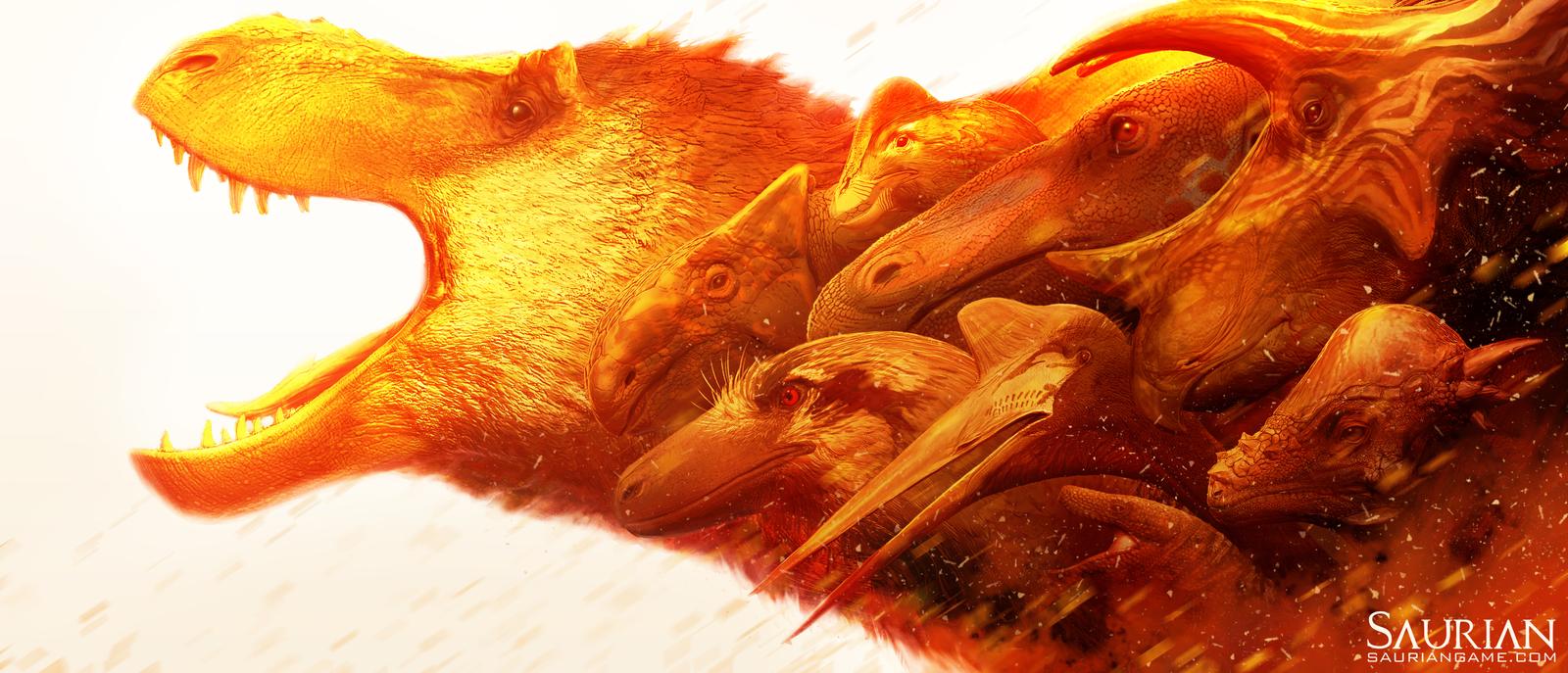Into the Breach, aka Kaiju Chess, aka the unexpected reboot of The NeverEnding Story, excels across the (64 tile) board. It’s gameplay and minimalist lore file neatly into a challenging and rewarding loop accessible for players of myriad dispositions. I struggle to outline the cascading mechanics of Into the Breach into a concise list, since the game’s learning curve is impressively organic and it conveys its rules and progression in a far simpler way than I can. And all this on the top of its pessimistic themes, articulated through stacks of objectives, that when the going gets rough, must be valued above one another.
Bugs and Environmental Hazards
The setting; an archipelago of five islands, each a different color of the world’s toxic rainbow (lava, dust, acid, solid ice, and the color of antiquated tanks). Four personalities lead each of the four major islands whom your teams of mechas support in the fight against the massive, insect-like Vek. The final island, only accessible after clearing two to four of the primary islands, is the venue for the final showdown against the Vek threat; the litmus test for humanity’s continued existence.
The game limits your tools to begin with. A single hero, only one team of three mechas, a choice of but one island to begin your struggles. Once the player completes islands, encounters other potential time-travelling heroes, and uses the achievement-based currency system (worry not, you’ll invariably catch a few here organically as you play), the roster and variability expands. This limitation is fantastic because the tasks of mastering crowd control, interfacing with geography, and immersing even with just one squad of mechas’s synergy is already oodles of fun. As my hours piled on, I continued to discover new maps and objective types I previously missed, and new ways to handle the Vek while keeping citizens (and the grid) safe.
A Long History
Into the Breach’s lore is hard to come by, and personally I do not much adhere to the word of God, whether or not Chris Avellone is the prolific deity in question. However, I do appreciate the degree to which these time travelling mechas express character and lore. The starting team, the Rift Walkers, are all about punching and shelling enemies across the eight-by-eight field with fists, tank shots, and mortars. The Steel Judoka are about judo throwing (!!!) and moving the enemy team into their allies line of fire. Others still utilize the elements; burning long stretches of fields, or launching a mortar that freezes both foe and self.
No squad of mechas are an island, either, as there are other upgrades to be discovered in time capsules or purchased with reputation that can serve as secondary abilities for mechs, some of which are locked by class (Prime, Brute, Science, and Ranged). Even if you hate achievements, they gate progression to encourage experimentation with existing squads and inform strategy for each unique team. And, you can mix-and-match teams with the “random squad” and “custom squad” functions if the built in teams do not suit your creativity.
This hierarchy of values derives from several factors. Each part of the island has a few objectives that net reputation that the player spends after completing the island. Protect the train, do not let your mechas or the grid sustain too much damage, and so on. The islands are connected by a grid that limits the rates to which the Vek can emerge. If buildings are attacked, people die and the grid is weakened; a sort of overarching health bar that, if it falls to zero, means doom for the timeline.
Grand Master Bug-Catcher
Occasionally, there are time pods that fall from the heavens that offer rewards if secured. And there are the mechas themselves that can take a few hits for the team, but not too many for risk of killing the pilot and all the bonuses they provide. Worry not, for upon failing in one timeline, the player can choose a surviving pilot and carry them over, bonuses and all, into the next one. This feature is a double-edged sword, however, as the player is always incentivized to choose their returning time-traveler, rather than trying a different character they unlocked.
Hopping, burrowing, flying, and pissing me off, the Vek come in all shapes and styles. Each island has their own unique blend. Their Psion Vek, for example provides different bonuses, from extra hit points, to exploding upon death, to a cozy damage-mitigating shell. The low tier hornets and scorpions later accompany other mobs whose conceits are more frighting Levels are not procedurally generated, but pull from a fairly large pool of maps per island. Combined with changing enemy line-ups and seldom will two runs be similar in content or progression. Randomness is always a factor, but that various from difficulty to difficulty, but never is it as apparent as in Subset Games‘s previous title, Faster Than Light. On easy, it is more of a puzzle game, but on normal expect to endure some losses.
At the End of the (Never Ending) Day
Into the Breach is less about thinking three moves ahead, and more about gaining as much ground as possible in one round. Enemies telegraph their every attack, and yet, sometimes solutions are gloriously opaque. Swallow your pride and take the nasty hits when necessary, but sometimes in just one strategic move citizenry and mecha alike can emerge scot-free. For example, one time I had several threats I could not contain, until, only after agonizing for a few minutes, did I realize that by finishing off a Psion Vek, whose passive gives all allies an extra hit point, that half the field would die. A single round can turn from a tense, teeth-gritting game of wits to pushing over a spiral of dominoes.
Pros:
- Tense tactical battles that require balancing multiple objectives and values
- Large cast of mechas and enemies allow for infinitely repeatable runs
- Enemies broadcast their impending attacks, making for fair and challenging puzzles
- Implied lore interacts with gameplay in fascinating fashion
Cons:
- Time-Traveling mechanic discourages using new characters
- Randomness, however minimal and fair, can be frustrating
Unlocking islands, mechas, time travelers in loops and loops, trying again and again. The game isn’t a series of separate runs but sequential attempts to save timeline after timeline, juggling failures and successes. They aren’t disconnected because of the material gains, but also the knowledge and skill acquired after failing humanity is a familiar experience. Into the Breach is a title that is pure video game—whimsically strategic.






